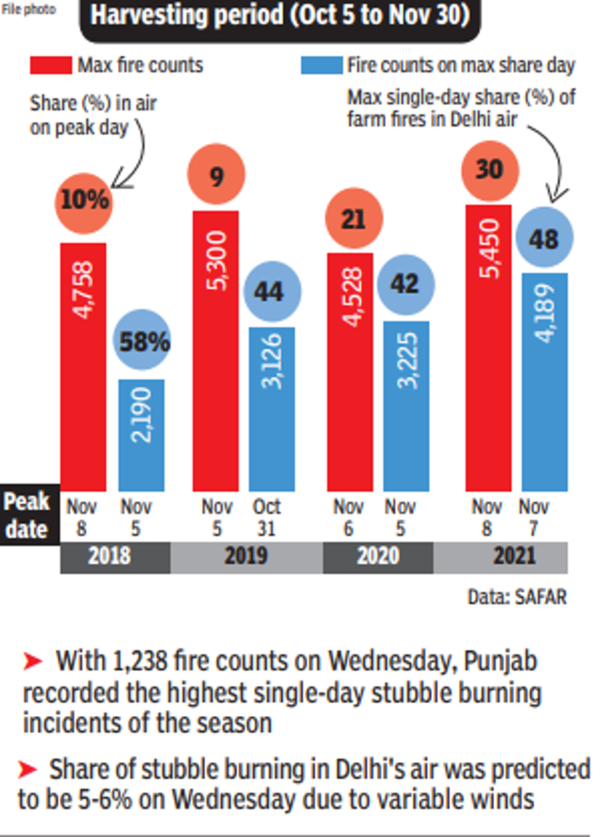Though Punjab recorded the season’s highest fire count on Wednesday with 1,238 farm fires, the contribution of stubble burning is predicted to be only 5-6% due to wind that is blowing in a direction away from Delhi. SAFAR said that a high fire count did not necessarily mean stubble burning would have a major role in Delhi’s air quality. He said there were meteorological factors at play too.
Track the pollution level in your city
During the peak burning season, the single-day contribution of farm fires to air pollution in Delhi is 20-30%, depending on wind direction. The highest single-day share was recorded at 58% in 2018, 44% in 2019, 42% in 2020 and 48% in 2021.
SAFAR’s founder and project director Gufran Beig said, “The factors that determine the share of farm fires to Delhi’s PM2.5 are transport level wind speed and wind direction. Besides, if there are calm conditions in Delhi, it affects the pollution level by trapping pollutants already released by stubble burning in other states.”

In the current season, the highest per-day share of stubble burning was recorded at 10% on Monday. However, as the peak burning season is expected to begin only in the next few days, weather officials said the capital’s air quality was yet to see the worst of the farm fire effect.
Data from SAFAR shows the maximum share of stubble burning in Delhi’s poor air in a day has gone up to 58% in the past years though the overall contribution in a season is less at 30%. There were two days in 2020 when the smoke component in Delhi’s PM2.5 concentration touched 40% or above but just one day each in 2019 and 2018.
In 2021, the maximum share of fire pollutants in a single day was 40% and 42% during the 62 days of the harvesting season. 2020 saw five days when the 24-hour share of stubble burning was between 31% and 39%. Only two such days each were witnessed in 2019 and 2018.
In contrast, the share of farm fire pollutants in PM2.5 in Delhi was just 9% though the fire counts in the neighbouring states had touched 5,300 on November 5, 2019, due to meteorological factors.






